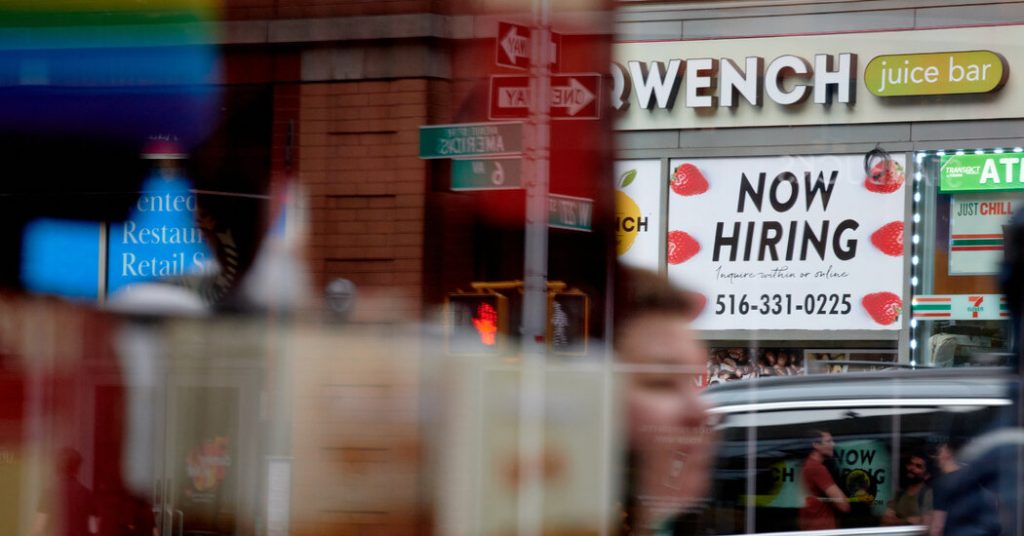The Federal Reserve has shifted its focus from inflation to the job market as a key factor in setting interest rates in 2022 and 2023. With inflation cooling, officials are now factoring in the job market data to make their decisions. However, the current labor market data is difficult to interpret and assess accurately. Fed Chair Jerome H. Powell indicated that the strength of the job market in the coming months will influence interest rate decisions. Rapid hiring has been a trend in recent months due to an increase in available workers, preventing the labor pool from being depleted. This hiring boom, fueled by immigration and workers re-entering the labor market, presents a unique challenge in evaluating the job market’s strength in real-time.
While job growth has been rapid, traditional measures like payroll gains are no longer providing a clear signal of the job market’s strength. Other indicators like wage growth, job openings, and unemployment rates are delivering conflicting messages, making it challenging to assess the current state of the job market and predict its future trajectory. This uncertainty complicates the Fed’s decision-making process, as they aim to strike a balance between maintaining a strong job market and avoiding inflation. The upcoming jobs report is expected to show continued rapid job gains in April, reflecting a trend that has persisted over the past year.
The Fed’s policy committee decided to keep interest rates at 5.3%, signaling a cautious approach as they await further evidence of inflation cooling. Mr. Powell emphasized the importance of employment as inflation has dipped below 3%. The expansion of the labor supply through immigration and increased labor market participation has allowed the economy to grow more strongly in recent years. While wage growth remains a concern, strong wage increases may lead to inflationary pressures if companies raise prices to cover higher labor costs. The Fed is monitoring wage gains closely to ensure they remain sustainable in the long run.
The future trajectory of job gains and wage growth remains unclear, with ongoing uncertainty in the market driven by factors such as interest rates and the impending presidential election. Employers are becoming choosier in their hiring decisions and may take longer to make selections amid this uncertainty. While demand for workers remains strong, employers may start to pull back as economic conditions evolve. A significant rise in unemployment could prompt the Fed to consider lowering interest rates to support the labor market. This asymmetry in how the Fed views the labor market suggests they would be more concerned with a marked slowdown in job gains rather than continued strong payroll numbers, given the challenges in interpreting the current labor market data.
In conclusion, the Federal Reserve’s focus has shifted from inflation to the job market as a central factor in setting interest rates in response to changing economic conditions. Rapid hiring, driven by an increase in available workers, has led to challenges in accurately assessing the strength of the current labor market. Conflicting indicators like wage growth and unemployment rates further complicate the Fed’s decision-making process. The upcoming jobs report is expected to show continued rapid job gains, reflecting a trend that has persisted over the past year. The Fed remains vigilant in monitoring wage growth to ensure it remains sustainable in the long run and does not lead to inflationary pressures. Amid ongoing uncertainty in the market, the Fed may respond to significant changes in unemployment rates by adjusting interest rates to support the labor market.


